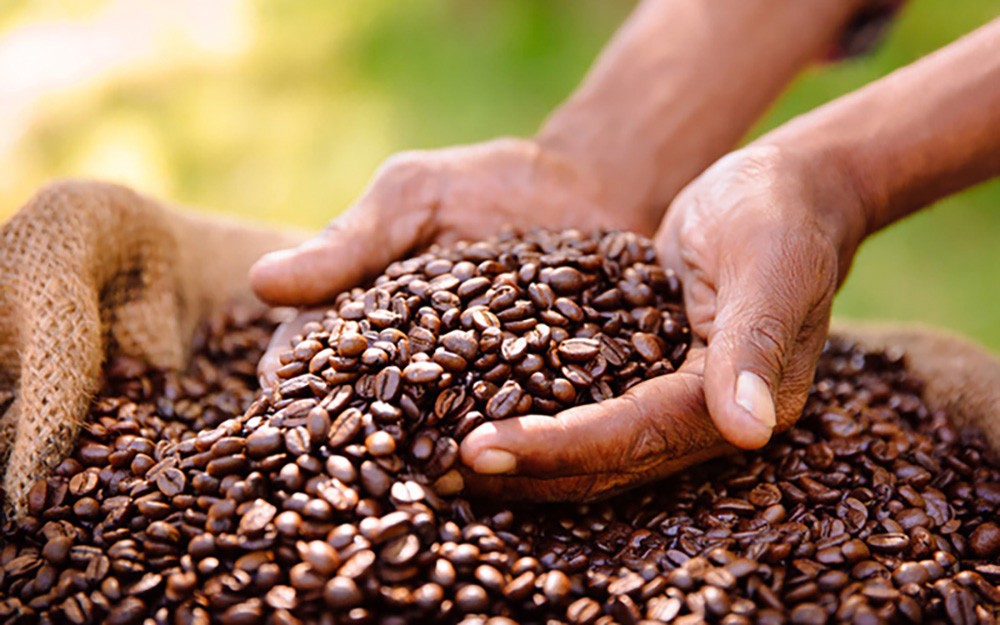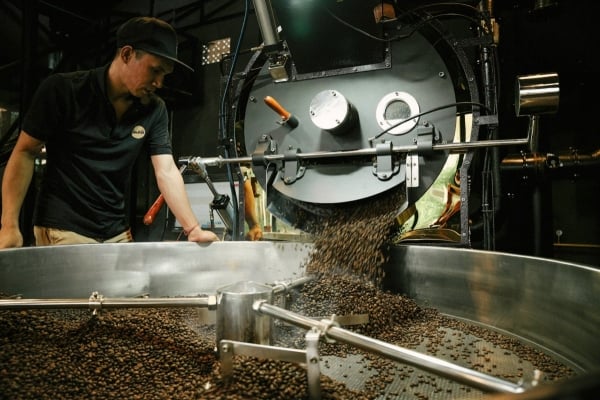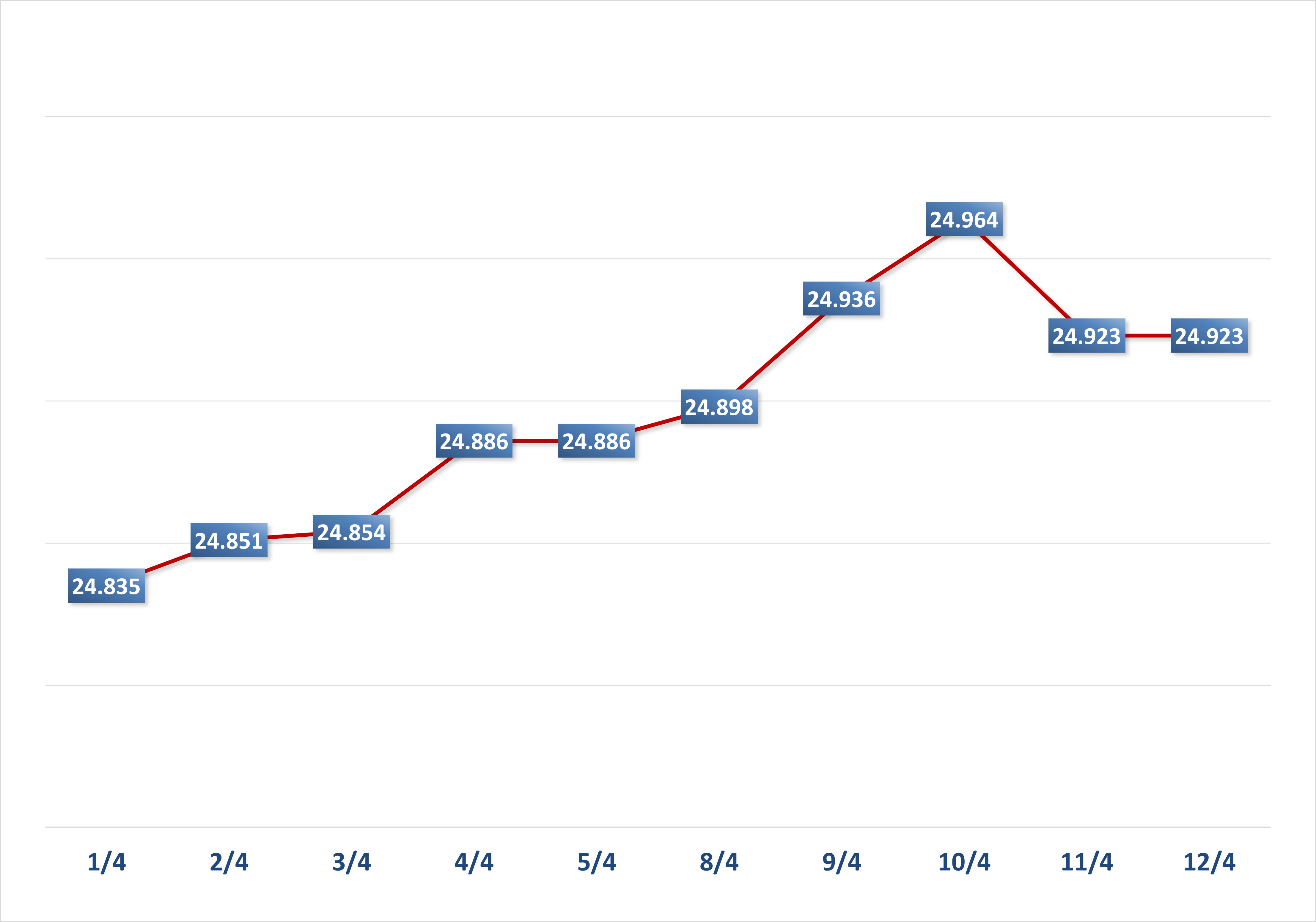| Inventory data continues to recover, export coffee prices turn to decrease Low coffee inventories continue to push export coffee prices up |
On the first day of the week, April 1, the European market was closed for Easter. Robusta coffee prices on the ICE Futures Europe London exchange remained unchanged at the closing price of the last trading session of March, the delivery term in May 2024 decreased by 80 USD, trading at 3,479 USD/ton. The delivery term in July 2024 decreased by 71 USD, trading at 3,396 USD/ton. Average trading volume.
Arabica coffee prices on the ICE Futures US New York exchange increased sharply when trading alone, the May 2024 delivery futures increased by 2.9 cents, trading at 191.80 cents/lb. Meanwhile, the July 2024 delivery futures increased by 3.05 cents, trading at 191.10 cents/lb. Trading volume was high on average.
News that recent heavy rains may have damaged coffee crops in Brazil weighed on coffee prices this session. The Brazilian meteorological agency Somar Meteorologia reported on April 1 that the Minas Gerais region received 75.4 mm of rain last week, or 335% of the historical average.
In the first quarter of 2024, Vietnam exported nearly 600,000 tons of coffee with a turnover of about 1.9 billion USD, an increase of only 3.1% in quantity but an increase of 54.7% in export turnover compared to the same period in 2023.
 |
| In the first quarter of 2024, Vietnam exported nearly 600,000 tons of coffee with a turnover of about 1.9 billion USD. |
According to the Ministry of Agriculture and Rural Development, coffee is the second highest export item in the agricultural sector, behind only wood products and surpassing even seafood. Currently, coffee prices have increased by 43.5% compared to the same period last year, reaching an average of 3,181 USD/ton. The European Union (EU) continues to be Vietnam's largest coffee export market.
The average export price of coffee in the first quarter of 2024 reached 2,373 USD/ton, up 6.8%. However, according to Mr. Nguyen Nam Hai - Chairman of the Vietnam Coffee and Cocoa Association (VICOFA), in fact, since the beginning of the year, the average export price of coffee has been very high, up to 3,200 USD/ton.
The high export price has also caused domestic coffee prices to reach their highest level in over 30 years at over VND92,000/kg, with the highest point at VND102,000/kg. This has more than doubled compared to the same period last year and increased by more than 30% compared to the end of 2023.
Domestic coffee prices have been rising steadily, reaching a record of VND100,000/kg, more than double that of about a year ago. But according to experts, the sad thing is that although coffee prices have increased, very few farmers have benefited, while processing enterprises have faced difficulties, because they usually buy raw materials as they produce, and farmers also rarely store coffee, most of which is sold after the harvest to pay for agricultural supplies.
Output in Vietnam, the world's main Robusta coffee grower, is forecast by the US Department of Agriculture (USDA) to reach 27.5 million bags in the 2023/24 crop year, much lower than the 31.3 million bags previously forecast.
Observers report that by early 2024, domestic coffee prices will increase by VND60,000/kg, so farmers will be excited to sell almost everything, because at this time, neither coffee growers nor domestic businesses have information to forecast prices. Meanwhile, many large French and Indian businesses in Vietnam have information to forecast the market, so they have collected a large amount of coffee in Vietnam and now they have the ability to influence prices.
Years of low financial returns for Vietnamese growers have led to reduced investment and crop switching. Furthermore, dry weather and high temperatures in recent years have compounded production losses and reduced yields, resulting in tight supplies, as evidenced by current low inventories.
Extreme temperatures and droughts in Southeast Asia, the world’s second- and third-largest producers of coffee beans, have led to lower harvests. The reduced supply has not only affected consumers but also companies’ revenues,
Source



![[Photo] Closing of the 11th Conference of the 13th Central Committee of the Communist Party of Vietnam](https://vstatic.vietnam.vn/vietnam/resource/IMAGE/2025/4/12/114b57fe6e9b4814a5ddfacf6dfe5b7f)

![[Photo] Overcoming all difficulties, speeding up construction progress of Hoa Binh Hydropower Plant Expansion Project](https://vstatic.vietnam.vn/vietnam/resource/IMAGE/2025/4/12/bff04b551e98484c84d74c8faa3526e0)


























































































Comment (0)